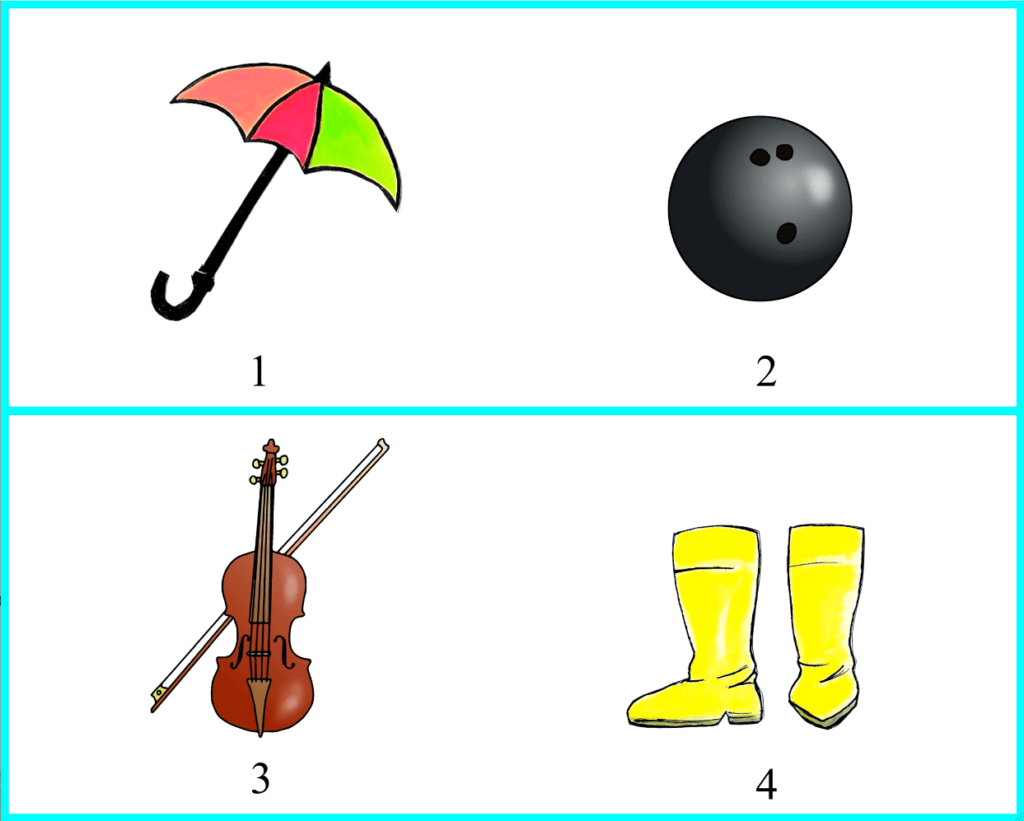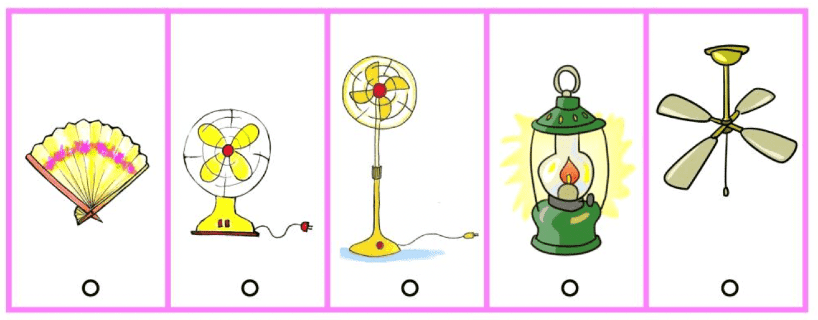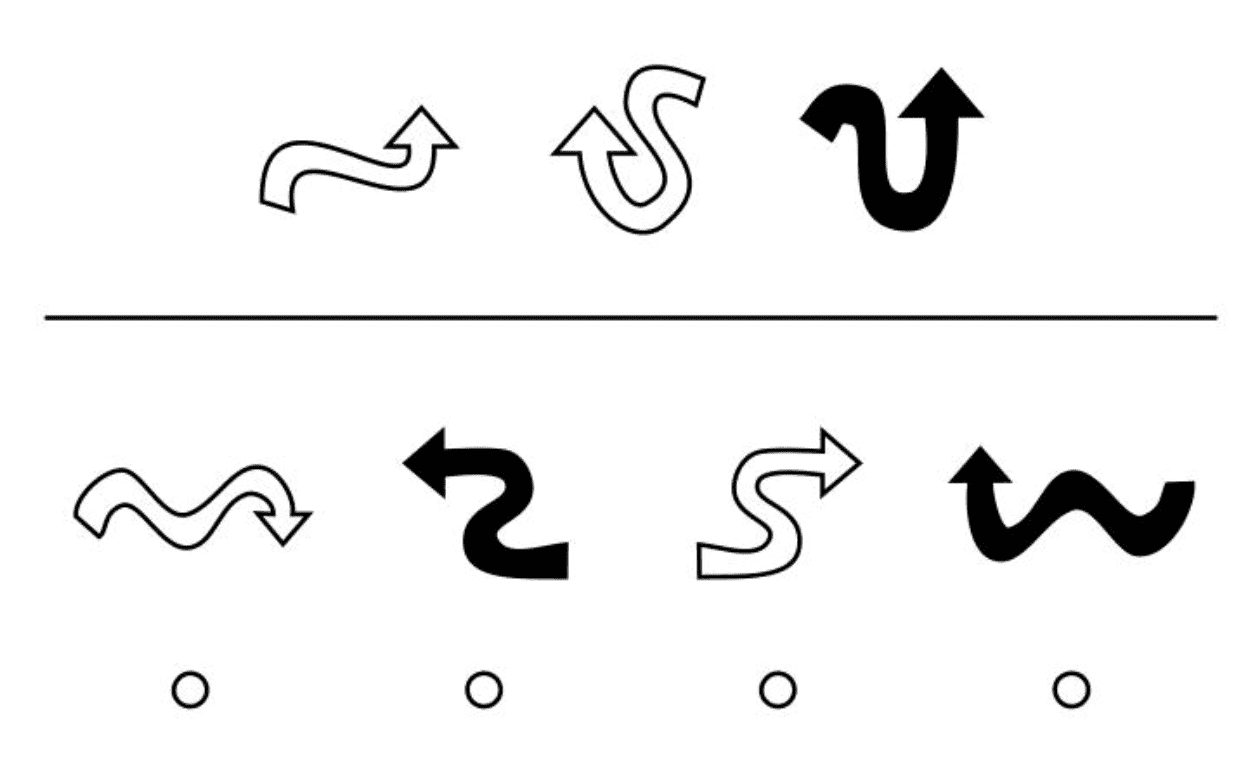Thinking and Engagement Assessment Practice Test and Sample Questions
What types of questions are on the Thinking and Engagement Assessment?
The T&E consists of:
- Verbal Reasoning
- Nonverbal Reasoning
- Receptive Language
- Expressive Language
- Developmental Academic Skills (Reading, Literacy, and Math)
- Engagement Assessment
Details of each section are below along with types of questions that may appear on the exam.
Verbal Reasoning Assessment
What is Verbal Reasoning?
Verbal reasoning is thinking and reasoning around representational pictures, language, and words. One key type of verbal reasoning involves the ability to conceptualize. This involves being able to:
- Identify and group together ideas with like attributes (i.e. color, size, texture)
- Classify them into groups (animals, letters, vegetables)
- Recognize similarities and differences (chocolate vs. vanilla, fruit vs. vegetables, plays vs. movies)
- Evaluate and judge different concepts or use critical thinking
(Ex. “Fruits are better than vegetables because they are tasty, sweet, and healthy. Vegetables are healthy but don’t always taste that good.”)
Here are examples of two different types of verbal reasoning questions.
Verbal Reasoning Sample Question 1
Look at the pictures in the 2 rows below. Choose 1 picture from the first row that goes with 1 picture from the second row.
Why do you think those 2 pictures go together?
Answer: 1 and 4 – used when it rains
Verbal Reasoning Sample Question 2
Look at the pictures in this row. Which one is different and doesn’t belong?
Answer: 4th picture – it is a lamp and not a fan
TestingMom.com provides 6 types of verbal reasoning questions found on early childhood tests.
Nonverbal Reasoning Assessment
What is Nonverbal Reasoning?
Nonverbal Reasoning is also known as Visual-Spatial or Spatial Reasoning. It is the opposite of reasoning with words. It involves the ability to reason and solve problems using:
- Pictures
- Shapes
- Diagrams
- Charts
- Tables
- Maps
Children need nonverbal reasoning for many different skills. Examples of some of these skills include:
- Drawing and identifying triangles, circles, and squares (which are the basis for letters and numbers)
- Writing on a page from left to right
- Spacing words
- Lining numbers up for long division
- Interpreting graphs and maps
- Solving geometry problems
Here are examples of two question types used to test nonverbal reasoning skills.
Nonverbal Reasoning Sample Question 1
What belongs in the empty box so that the figures on the bottom go together in the same way as the figures on top?
Answer: 2nd picture over the bubble – colors switch places
Nonverbal Reasoning Sample Question 2
Look at the shapes on top. They are alike in some way and so they belong together. Choose one shape from the bottom row that belongs with the figures on top.
Answer: last figure – all arrows point up
TestingMom.com provides 12 types of nonverbal reasoning questions found on early childhood tests.
To start practicing with your child for the T&E Test, sign-up below to access our 100 free questions.
Receptive Language Assessment
What is Receptive Language?
Receptive language is the ability to comprehend language either heard or read. Kids develop their understanding of language before they are able to talk. Ask a 1-year-old to point to the cow in a picture and they likely can, even though they may not be able to say the word “cow.”
Here are examples of 2 types of questions used to test Receptive Language Skills.
Receptive Language Sample Question 1
Point to the picture that shows the shark.
Answer: 4th picture
Receptive Language Sample Question 2
Listen to the word I say. The word is “foam.” Can you choose the picture that best goes with the word “foam?”
Answer: 3rd picture over the bubble
TestingMom.com provides 7 types of receptive language questions found on tests like the T&E.
Expressive Language Assessment
What is Expressive Language?
Expressive language is your child’s ability to orally express themselves in a clear, organized manner.
Here are examples of 2 types of questions used to test Receptive Language Skills.
Expressive Language Sample Question 1
Parent: Ask your child this question. The more detail given, the more credit your child would earn.
What is a key?
1 point: It opens doors.
2 points: It’s made of metal. You put it in a lock and turn it and it opens the lock or door.
Expressive Language Sample Question 2
Parent: Ask your child the question below. There is no right or wrong answer. Your goal is to get your child to think about how to solve a problem. Then, having them use expressive language to communicate his or her ideas about how they would do it. Elicit elaboration by asking, “Can you tell me more?” or “What else?”
Your mom punishes your sister for leaving dirty dishes in the sink, but you’re the one who left the dishes there.
If this were to happen to you, tell me:
1) What is the problem?
2) How would it make you feel?
3) What would you do to help solve it?
TestingMom.com provides 7 types of expressive language questions found on tests like the T&E.
T&E Developmental Early Academic Skills Assessment (Reading and Literacy)
Schools ask questions in this category to gauge your child’s academic development. The goal being to determine whether your child would succeed in a difficult program. Schools do not expect your child to be able to read before starting school. If they can read, that’s great! If they cannot, schools know that your child will master these skills later.
There may be some questions on the actual assessment that are beyond your child’s ability. Let your child know that it is OK if they are unable to answer a question.
Here are examples of 2 types of questions used to test Expressive Language Skills.
Expressive Language Sample Question 1
Rhyming words like cat and bat can draw your child’s attention to component sounds within words. Research shows that recognizing rhymes leads to an easier time learning to read.
Say: Look at the picture below. It is mail. I’m going to read some words to you. Choose the word that rhymes with mail. What rhymes with mail? Is it whale, train, corn, or lime?
Answer: whale
Expressive Language Sample Question 2
Say: Touch the picture that begins with a different letter sound. Is it chair, cone, chew or chin?
Answer: cone
TestingMom.com provides 8 types of reading and literacy questions found on tests like the T&E.
T&E Developmental Early Academic Skills Assessment (Quantitative)
Math questions in this category are also asked to gauge a student’s fit with the school’s program. Schools do not expect your child to be able to add and subtract numerals before starting school. If they can add and subtract, that’s great. If they cannot, the school knows that your child will master this skill later.
The questions that follow go through many math skills and concepts. These are important for children to know before starting school.
Here are examples of 2 types of questions used to test Quantitative Skills.
Quantitative Sample Question 1
Say: Look at the pictures below. Choose the picture that is third.
Answer: eye
Quantitative Sample Question 2
Say: About how many feet long is the train?
Answer: 6
TestingMom.com provides 10 types of quantitative questions found on tests like the T&E.
Engagement Assessment
Engagement refers to observable actions that portray active participation and focused involvement. Research has shown that the following qualities comprise “engagement.” Altogether, these create a picture that tells educators how a child responds to a learning activity.
- Attention to Instruction – How well child listens to examiner’s instructions
- On-task Behavior – How well child stays with the task at hand
- Persistence – How hard a child works on a task even when it is challenging
- Monitoring and Strategy – Whether the child utilizes trial and error to find solutions
- Enthusiasm and Energy – How eagerly the child takes on the challenge
- Positive or Negative Affect – Does the child’s behavior show excitement about taking on a problem? Or does their behavior show indifference/frustration?
Evaluators assess engagement through observation during testing or, when available, in a classroom. The examiner completes a checklist assessing the level of engagement the child demonstrates. A checklist may turn into a detailed written report. Or, a test report may include the checklist along with descriptive commentary.
For practice, TestingMom.com provides 5 challenging, novel tasks to teach your child. These tasks require him or her to use their thinking and problem-solving skills. You will then “score” your child’s engagement on a 5-point scale against test criteria. This will give you a sense of how engaged your child is in learning novel tasks.
Want to give your children the resources needed to take the T&E Assessment with confidence?
Start preparing now with TestingMom.com! Besides thousands of practice questions, we also have detailed lessons for parents. These lessons will help you teach your child how to strategically approach test questions.
Sign-up below to get started with 100 free practice questions!
See if TestingMom.com supports your child’s test by your school district. If you don't see your child's school district listed, check with us! We have practice for other tests as well.



Tell us about your experiences
One Response
Vivian
Thanks